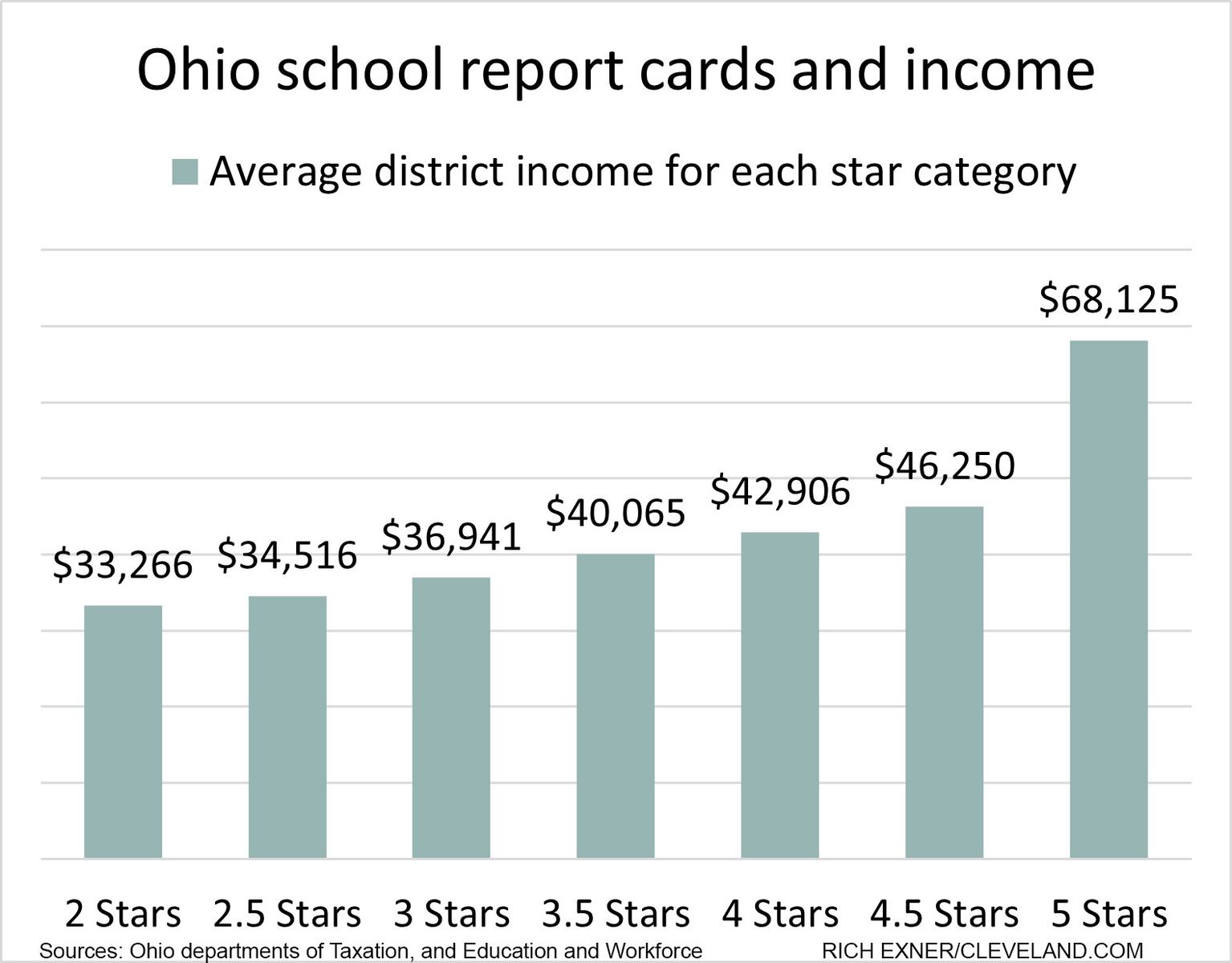Business
Wealthiest Ohio School Districts Dominate 2025 Report Cards

The latest report cards from the Ohio Department of Education and Workforce reveal a clear trend: wealthier school districts consistently outperform their less affluent counterparts. Released on March 4, 2025, the report indicates that 47 out of 607 school districts in Ohio achieved the highest rating of five stars. This performance gap highlights the significant influence of median household income on educational outcomes in the state.
Analysis by cleveland.com, utilizing data from the Ohio Department of Taxation, shows that the average median income in the top-rated districts is $68,125. Among these, the eleven districts with the highest median incomes also received five-star ratings. These districts include Bay Village, Bexley, Chagrin Falls, Granville, Indian Hill, Mederia, Olentangy, Orange, Upper Arlington, and Wyoming. The median incomes in these areas range notably, with Bay Village at $70,999 and Indian Hill leading at $94,710.
In stark contrast, the two-star rated districts exhibit significantly lower median incomes. For instance, Lima’s median income is just $30,194, while Columbus registers $39,032. This disparity raises important questions about the relationship between funding, resources, and student performance.
To further illustrate this trend, the report summarizes median incomes across various star ratings. The data is as follows:
– **5 stars**: $68,125
– **4.5 stars**: $46,250
– **4 stars**: $42,906
– **3.5 stars**: $40,065
– **3 stars**: $36,941
– **2.5 stars**: $34,516
– **2 stars**: $33,266
These median incomes encompass all tax filers within the districts, not solely families with children enrolled in the schools. Consequently, they provide a broader view of the economic landscape impacting education.
The implications of these findings are significant as they underscore the persistent achievement gap linked to socioeconomic status. Districts with higher incomes tend to have more resources, better facilities, and potentially more experienced educators, all of which contribute to improved student outcomes.
In response to these results, education advocates are calling for a reevaluation of funding strategies to ensure equitable resources across all districts. The hope is that by addressing these disparities, all students in Ohio can have access to quality education, regardless of their district’s wealth.
For those interested in exploring the detailed performance of each district, the full report card data is available through the Ohio Department of Education’s official website. The ongoing discussions surrounding educational equity in Ohio are likely to intensify as communities reflect on the implications of these report card results.
As Ohio prepares for future assessments, the focus on the science of reading initiative will be critical, with the upcoming report cards set to provide further insights into educational advancements and ongoing challenges.
-

 Lifestyle3 months ago
Lifestyle3 months agoLibraries Challenge Rising E-Book Costs Amid Growing Demand
-

 Sports3 months ago
Sports3 months agoTyreek Hill Responds to Tua Tagovailoa’s Comments on Team Dynamics
-

 Sports3 months ago
Sports3 months agoLiverpool Secures Agreement to Sign Young Striker Will Wright
-

 Lifestyle3 months ago
Lifestyle3 months agoSave Your Split Tomatoes: Expert Tips for Gardeners
-

 Lifestyle3 months ago
Lifestyle3 months agoPrincess Beatrice’s Daughter Athena Joins Siblings at London Parade
-

 World3 months ago
World3 months agoWinter Storms Lash New South Wales with Snow, Flood Risks
-

 Science3 months ago
Science3 months agoTrump Administration Moves to Repeal Key Climate Regulation
-

 Science2 months ago
Science2 months agoSan Francisco Hosts Unique Contest to Identify “Performative Males”
-

 Business3 months ago
Business3 months agoSoFi Technologies Shares Slip 2% Following Insider Stock Sale
-

 Science3 months ago
Science3 months agoNew Tool Reveals Link Between Horse Coat Condition and Parasites
-

 Sports3 months ago
Sports3 months agoElon Musk Sculpture Travels From Utah to Yosemite National Park
-

 Science3 months ago
Science3 months agoNew Study Confirms Humans Transported Stonehenge Bluestones









